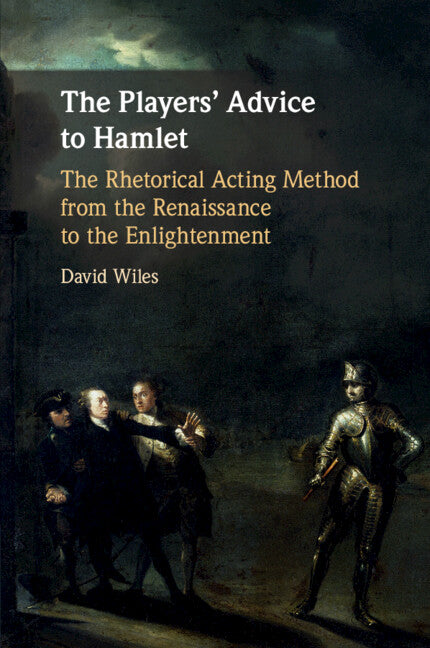Freshly Printed - allow 8 days lead
Couldn't load pickup availability
The Players' Advice to Hamlet
The Rhetorical Acting Method from the Renaissance to the Enlightenment
Outlining a classical 'rhetorical' system, this is the first serious overview of how European actors c.1550–1800 thought about acting.
David Wiles (Author)
9781108712811, Cambridge University Press
Paperback / softback, published 2 February 2023
380 pages, 18 b/w illus.
22.9 x 15.2 x 2 cm, 0.47 kg
Hamlet is a characteristic intellectual more inclined to lecture actors about their craft than listen to them, and is a precursor of Enlightenment figures like Diderot and Lessing. This book is a quest for the voice of early professional actors, drawing on English, French and other European sources to distinguish the methods of professionals from the theories of intellectual amateurs. David Wiles challenges the orthodoxy that all serious discussion of acting began with Stanislavski, and outlines the comprehensive but fluid classical system of acting which was for some three hundred years its predecessor. He reveals premodern acting as a branch of rhetoric, which took from antiquity a vocabulary for conversations about the relationship of mind and body, inside and outside, voice and movement. Wiles demonstrates that Roman rhetoric provided the bones of both a resilient theatrical system and a physical art that retains its relevance for the post-Stanislavskian performer.
Introduction
1. Hamlet's advice to the players
2. Rhetorical performance in antiquity
3. Acting, preaching and oratory in the sixteenth century
4. Baroque acting
5. Actors and intellectuals in the Enlightenment era
6. Emotion
7. Declamation
8. Gesture
9. Training.
Subject Areas: Literary reference works [DSR], Literary studies: plays & playwrights [DSG], Theatre direction & production [ANF], Theatre studies [AN]


